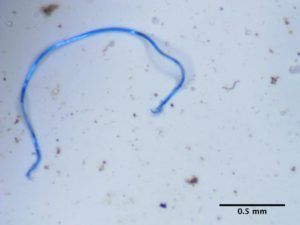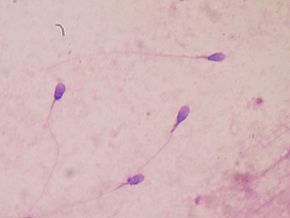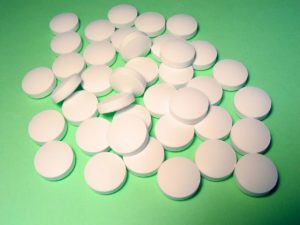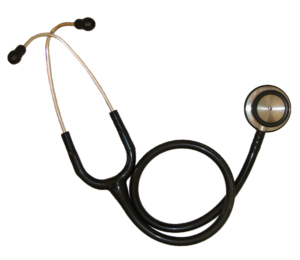 Did you know that you are eating teeny tiny bits of plastic in your food every day? And inhaling the pieces floating in the air? These tiny bits of plastic are called microplastics, and are from all the plastic breaking down (degrading) in the environment. They have entered the food chain (e.g. from fish and other animals ingesting bits of plastic, food preparation, or from plastic packaging), and in this way we are also ingesting microplastics. They vary in shape and size, but some pieces can be so small that they can only be seen with a microscope.
Did you know that you are eating teeny tiny bits of plastic in your food every day? And inhaling the pieces floating in the air? These tiny bits of plastic are called microplastics, and are from all the plastic breaking down (degrading) in the environment. They have entered the food chain (e.g. from fish and other animals ingesting bits of plastic, food preparation, or from plastic packaging), and in this way we are also ingesting microplastics. They vary in shape and size, but some pieces can be so small that they can only be seen with a microscope.
The problem is that microplastics can enter our body several ways (through ingestion get into the gut and so get into human tissues, or through inhalation into the lungs). They could trigger an immune response, or the plastic could release chemicals, such as carcinogens or endocrine disruptors. Unfortunately, the health effects from microsplastic ingestion are unknown.
A study by Canadian researchers looked at all available evidence from 26 studies to try to get some idea of how many microparticles of plastic Americans ingest over one year. The researchers estimate that annual consumption of microplastics ranges from 39,000 to 52,000 particles (depending on age and sex). When they added in inhalation of microplastic particles, the numbers increased to 74,000 to 121,000. And those who only drink bottled water may be getting an additional 90,000 microplastics (versus about 4000 microplastics from tap water).
These numbers are for about microplastics found only in certain foods (fish, shellfish, sugars, salts, honey, alcohol) that add up to about 15% of the diet. But the number of microplastics in other foods (such as fruits, vegetables, meats, grains) have not been studied. The researchers point out that we ingest microplastics that are in the air and settle on our food during meal preparation and during meals. So the actual numbers of microplastics that are ingested each year are certain to be much higher! [Microplastics are even in our house dust.]
What can one do to lower the number of microplastics that we eat? Number one, drink tap water or bottled water in glass bottles, and less water from plastic bottles. Since no one knows about how many plastic particles are in other foods, one possibility may be to eat more foods and beverages that come in glass containers, rather than plastic containers. As the researchers point out, microplastic research is still in its infancy. They also felt that since this study only looked at certain foods, then they really underestimated how many microplastics Americans ingest each year.
From Science Daily: Americans consumer 70,000 particles of microplastics per year ...continue reading "Americans Ingest More Than 74,000 Microplastic Particles Each Year"

 What's with the blueberry obsession in medical studies? Another study finding health benefits with frequent eating of blueberries was
What's with the blueberry obsession in medical studies? Another study finding health benefits with frequent eating of blueberries was  There has been much discussion recently over why the incidence of allergies and chronic diseases is rising in Western industrialized countries. Some theories have been proposed, such as the hygiene hypothesis (that early childhood environments are too sterile and so that the developing immune system isn't properly "trained"), or that medicines such as antibiotics kill off beneficial bacteria, whille others say it is due to our Western diet and lifestyle. However, recently some researchers have proposed that the absence of
There has been much discussion recently over why the incidence of allergies and chronic diseases is rising in Western industrialized countries. Some theories have been proposed, such as the hygiene hypothesis (that early childhood environments are too sterile and so that the developing immune system isn't properly "trained"), or that medicines such as antibiotics kill off beneficial bacteria, whille others say it is due to our Western diet and lifestyle. However, recently some researchers have proposed that the absence of  There has been a lot of discussion recently about whether older adults form new neurons in the brain. Neurons are specialized cells transmitting nerve impulses in the brain - they are nerve cells. In other words, if elderly people form new neurons in the brain, then this is excellent news for brain function. This means we can look for ways to enhance neurogenesis (formation of new neurons) and slow or prevent cognitive decline, whether in diseases such as Alzheimer's or normal age-related cognitive declines. Because yes, it is normal to have age-related declines, but some people have more declines while
There has been a lot of discussion recently about whether older adults form new neurons in the brain. Neurons are specialized cells transmitting nerve impulses in the brain - they are nerve cells. In other words, if elderly people form new neurons in the brain, then this is excellent news for brain function. This means we can look for ways to enhance neurogenesis (formation of new neurons) and slow or prevent cognitive decline, whether in diseases such as Alzheimer's or normal age-related cognitive declines. Because yes, it is normal to have age-related declines, but some people have more declines while  Two years ago
Two years ago  Eat real foods, not supplements.
Eat real foods, not supplements.  Are you aware that other countries do not recommend all the tests and screenings that medical specialty organizations in the U.S. recommend? Medical panels in different parts of the world may issue guidelines that vary from U.S. medical specialty guidelines, and sometimes even conflict with them. This is happening even though all groups in various countries are looking at the same medical evidence on which to base recommendations.
Are you aware that other countries do not recommend all the tests and screenings that medical specialty organizations in the U.S. recommend? Medical panels in different parts of the world may issue guidelines that vary from U.S. medical specialty guidelines, and sometimes even conflict with them. This is happening even though all groups in various countries are looking at the same medical evidence on which to base recommendations. How frequently do you eat foods with nanoparticles in them? The use of nanoparticles in foods is increasing every year, with the result that people may eat foods with them daily (thus having
How frequently do you eat foods with nanoparticles in them? The use of nanoparticles in foods is increasing every year, with the result that people may eat foods with them daily (thus having  Did you know that over 90% of all Americans have pesticide residues in their bodies? How do we know this? From studies and from the
Did you know that over 90% of all Americans have pesticide residues in their bodies? How do we know this? From studies and from the  Another study finds beneficial health effects from eating
Another study finds beneficial health effects from eating